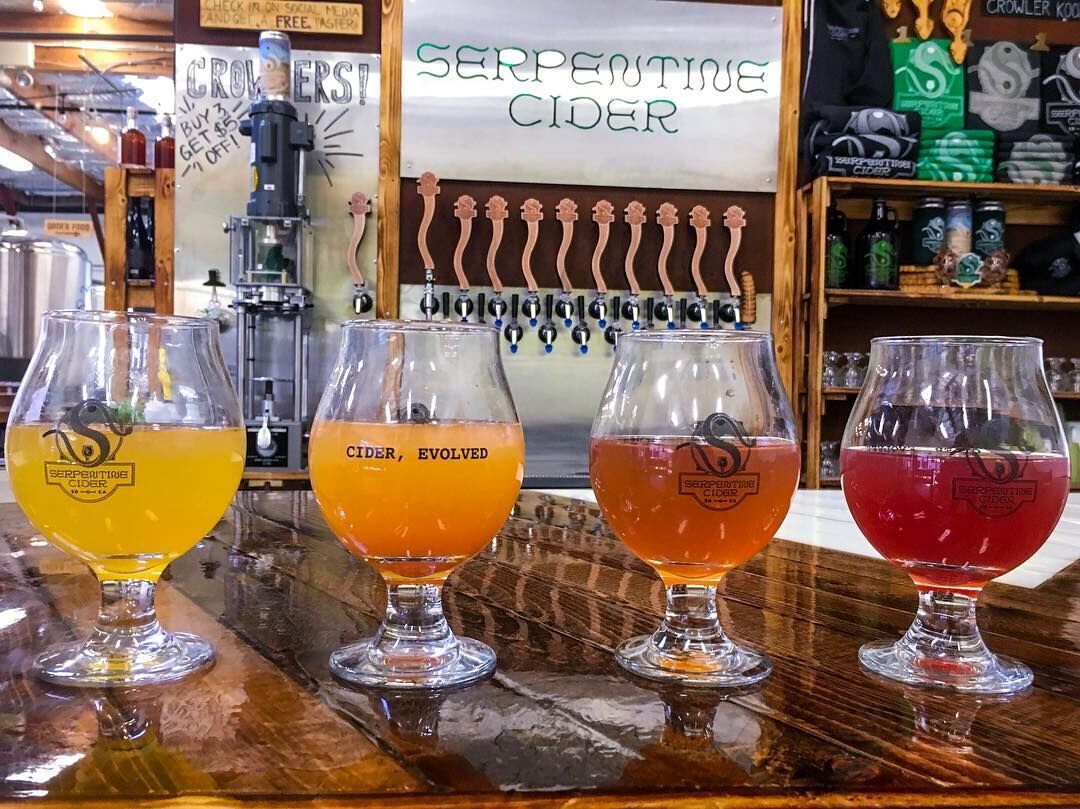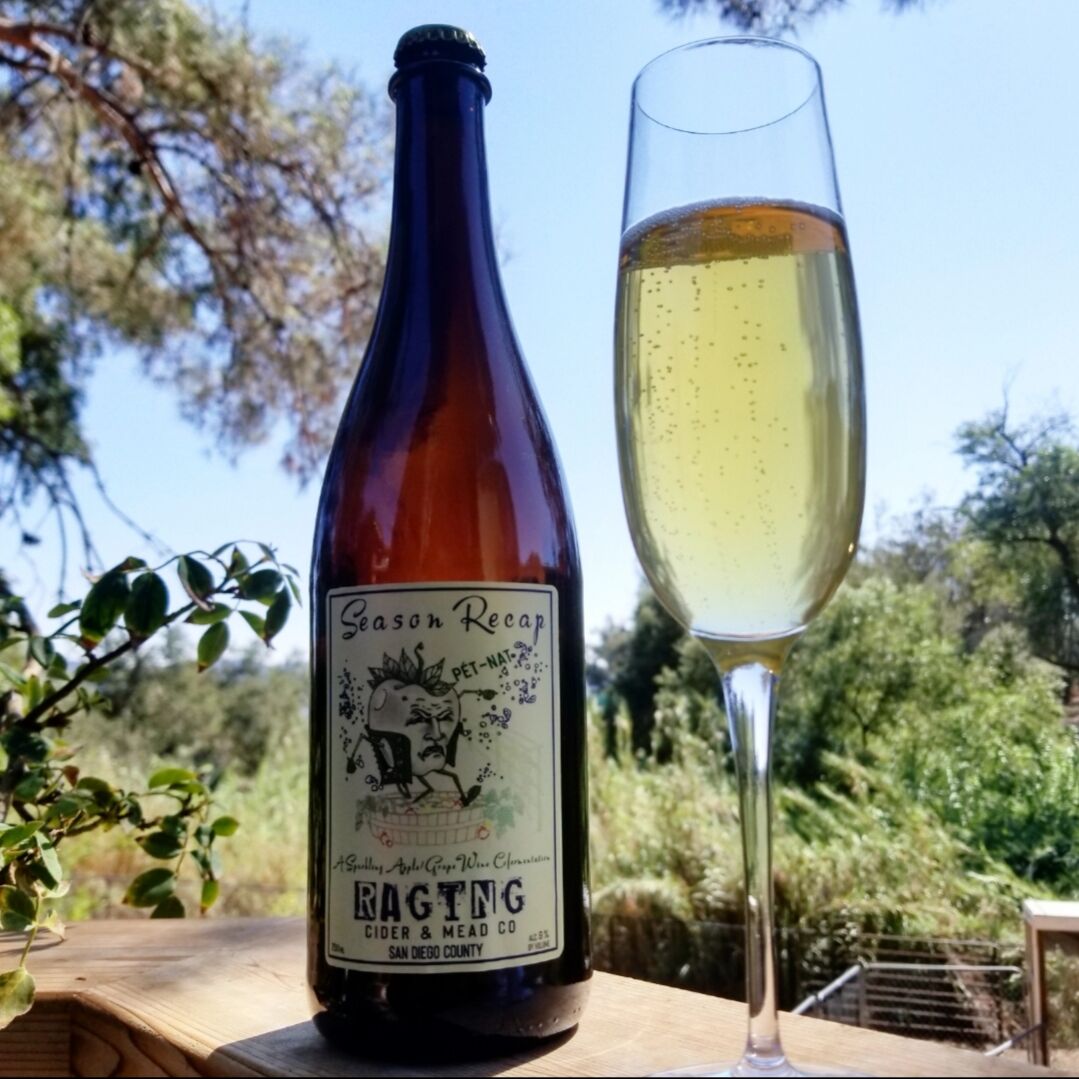
Serpentine Cider
Courtesy of Serpentine Cider
Over the last few months, we’ve been keeping a little secret. Our very own beer expert Beth Demmon was deep in the trenches writing a new book, The Beer Lover’s Guide To Cider: American Ciders For Craft Beer Fans to Explore.
This September, Beth’s book will finally be released into the world and we couldn’t be prouder. In it, she discusses the similarities (and differences) between craft beer and cider, bringing her wealth of industry knowledge to readers and breaking down some of the best ciders in the country.
She spent months exploring, tasting, and researching a variety of ciders so that any beer lover could learn to appreciate the boozy beverage.
To give you a little taste of what to expect, she takes us through some of the most interesting facts that she learned along the way. Read more below.
“Cider… you mean like juice boxes for kids?”
If I had a dollar for every time someone said that to me, I’d have at least $47 and possibly up to $2,985. (I eventually stopped counting for my own sanity.) The point is, when I talk about cider—the fermented juice of apples—a lot of people either don’t know what I’m talking about, or they think they know what I’m talking about but are actually totally wrong about almost everything.
So help me out folks. Save my brain and prepare your palate, because here are 10 things to know about cider, America’s first (and finest) beverage.
It’s not “hard cider.” It’s just cider.
You don’t specify between wine and “hard wine,” or beer and “hard beer.” Same for cider. What people (mistakenly) call cider for kids is just apple juice: no booze, just sweet sugar nectar that vaguely smells and tastes of apple. Juice becomes cider when fermentation is complete and the most delightful characteristic of all emerges: alcohol.
Cider is naturally gluten-free.
Because cider is made of apples, yeast, and water, it’s the perfect drink for anyone with Celiac disease or gluten intolerance. “Gluten comes from wheat and barley products,” explains Dave Carr, owner and cider maker at Raging Cider & Mead Company in San Marcos. Since there’s no grain used in cider, there’s no gluten, no problem.

Raging Cider & Mead Co.
Courtesy of Dave Carr, Raging Cider & Mead Co.
Not all cider is sweet.
I’d probably add at least a couple thousand more dollars to my bank account if I included every time I heard some version of “I don’t like cider, because it’s too sweet.” Like beer and wine, cider runs from bone-dry to very sweet and everything in between. If I tried a sweet Riesling and decided never to try a dry Cabernet Sauvignon because of it, I’d be closing myself off to an entire world of flavors and finishes. Plus, I’d sound pretty stupid. Don’t be stupid. Give cider a chance.
All cider is technically wine.
Wine is alcohol made from fermented fruit juice. What we call “wine” comes from grapes, but cider simply uses apples instead. It’s made the same way, it’s taxed the same, but it doesn’t taste the same. (Apples taste better, but that’s just, like, my opinion, man.)
Cider is not “brewed.”
“Brewing means heat is added,” explains Carr. Artisanal wine and cider makers do not use heat to extract juice from fruit or during fermentation. In fact, doing so would be extremely detrimental to the final product.
Some large-scale commercial cideries who rely on juice concentrate rather than fresh pressed juice may need to utilize heat to reduce the amount of water in the final product, but comparing macro cider to craft cider is the same old story we’ve all heard in beer.
TL;DR there are no cider brewers. Just cider makers.
Other fruit can be used in ciders.
This might be controversial to cider makers and purists, but hear me out. Ciders made with any other fruit on top of the apple base are fruited ciders. There are plenty of guava ciders, blueberry ciders, cherry ciders (you name it) out there. To me, if the soul of a cider remains apples, it’s still a cider. Since there’s no universal standard measurement for souls, this isn’t a quantifiable metric, but the takeaway here is if you enjoy the taste of pineapples, reach for a pineapple cider next time rather than a pineapple cocktail. It might surprise you.
There are over 7,500 types of apples (and counting) in the world.
The United States is home to 2,500 of them, including the only native apple to North America, the crabapple. There used to be many more varieties, but one unforeseen and catastrophic effect of Prohibition was the intentional destruction of thousands of cider apple orchards, which, thanks to their sinful fruit, were popular stops along the Devil’s train tracks leading straight to boozy hell. Recent scientific efforts have helped revive interest in apple cultivation, leading to the development of new varieties every year.

Oddish Wine
Photo Courtesy of Billy Beltz, Oddish Wine
You (probably) won’t find cider apples at the grocery store.
“Just like wine grapes, traditional cider apples are much different than the apples you find in the store,” says Billy Beltz, co-founder of Oddish Wine and Lost Cause Meadery. Industrialization and a desire to improve how apples look (rather than how they taste) has led to what I can only describe as “Millennial Gray-ing” of apples. Sure, Red Delicious is a safe, shiny, non-bruised choice. But it tastes like crap and is exceptional only in how boring it is. I promise: apples are much cooler than Vons makes them out to be, and cider is a great way to find that out.
Anyone (of legal age) can make it at home.
Cider is easier to make at home than it is to homebrew beer. There, I said it. It’s cheaper too. “The upfront investment in equipment to home make cider can be far less than the upfront to make beer,” says Carr. An easy way to start is by grabbing a gallon jug of non-alcoholic apple cider from a local store (preferably non-pasteurized, but take what you can get). Pour in a vial of liquid yeast and replace the cap with an airlock. (Yeast and airlocks are both easy to find at any homebrew store for a couple bucks.)
After around two weeks, voila! You have your first home made cider. The first few batches probably won’t taste phenomenal, but you can feel better about it by bragging about your DIY efforts to anyone who will listen. (Cashiers at Trader Joe’s are ideal candidates. Ask me how I know.)
San Diego has plenty of cideries of its own.
PARTNER CONTENT
Cider is made in all 50 states, plus Washington, D.C., and all across San Diego. To try a wide range of styles made locally, I recommend spots like Bivouac Ciderworks, Serpentine Cider, Newtopia Cyder, or Twisted Horn Mead & Cider. For more traditional, dry ciders, a few favorites are Raging Cider & Mead, Calico Cidery, and Storum Ranch Cider & Wine. There’s a cider (or ciders) for everyone—you just have to give it a try. Yes, even if you have before. You owe me $1.



















